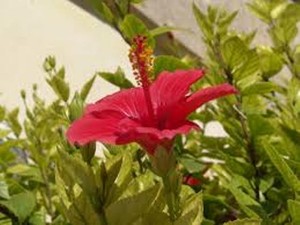16 Jan Thu 2014
Chaparral herb can cause liver and kidney damage
The herbChaparral refers to three herb species: Larrea tridentata, Larrea divaricata and Larrea mexicana, a/k/acreosote bush, greasewood, or hediondilla
Scientific/medical name(s): Larrea divaricata coville, Larrea tridentata (DC) coville
The Chaparral shrub grows in the Western United States and parts of Mexico and is used traditionally by the indigenous people of these regions to treat such conditions as rheumatism, arthritis, stomach pain, cancer, tuberculosis, bowel cramps, venereal disease,HIV, colds and bronchitis.
Proponents claim that Chaparral can help relieve pain, reduce inflammation, aid congestion, increase urine elimination, and slow the aging process. It is also promoted as an anti-cancer agent and an antioxidant (a compound that blocks the action of free radicals, activated oxygen molecules that can damage cells). Some promoters call it a “cleanser” or detox herb. A bitter and unpleasant-tasting tea or a tincture, Chaparral is also sometimes used with other herbs in “anti-cancer tea”.
Chaparral tea was used widely in the United States from the late 1950s to the 1970s as an alternative anti-cancer agent. Experimental studies in the 1960s showed that Chaparral could cause problems with kidney and liver function.
The FDA has recommended since 1968 that Chaparralnot be swallowed or taken internally by any other route. Chaparral can be highly toxic and has been reported to cause severe and permanent liver disease that can be fatal.
The growth of interest in alternative medicine led to increased use of Chaparral in the 1980s. By the early 1990s, there had been many reports of Chaparral-linked illnesses, and the FDA issued a warning. This resulted in sellers voluntarily removing many Chaparral products from stores. Despite many concerns and warnings, Chaparral has become available again, and is advertised and sold from Internet sites, but, not mine!
Since February 2006 - Health Canada haswarned consumers not to ingest the herb Chaparral in the form of loose leaves, teas, capsules or bulk herbal products because of the risk of liver and kidney problems.
Nordihydroguaiaretic acid (NDGA), the principal ingredient in Chaparral is a potent antioxidant.At one time it was thought to be potentially useful in the treatment of cancer. However, studies were done on rats, not humans.NDGA possesses considerable toxicity.
Chaparral is considered a dangerous herb that can cause irreversible, life-threatening liver damage and kidney damage, including cysts in the kidney and kidney failure. The U.S. Food and Drug Administration (FDA) has cautioned against the internal use of Chaparral
I personally would even caution against using Chaparral as a topical, since herbs go right into the body even quicker through the skin than even ingesting.
Chaparral very toxic and can cause serious and permanent kidney and liver damage and possibly death. It can also cause:
-
Stomach pain
-
Diarrhea
-
Weight loss
-
Fever
-
Skin rash and itching
-
Tiredness
-
Acute inflammation of the liver (hepatitis)
-
Kidney cysts
-
Kidney cancer
Chaparral contains compounds that can both increase the risk of sunburn and cause skin irritation to parts of the body not exposed to the sun.
The herb has also been associated with severe hepatotoxicity, with some cases requiring liver transplantation.
Chaparralmay cause dangerous interactions and interfere with how some drugs work, especially those that may also affect your liver and kidneys.Blood-thinning medications (anticoagulants);diabetic drugs;some antibiotics, and non steroidal anti-inflammatory drugs (for example, pain medicines such as aspirin, ibuprofen, naproxen, and others). Chaparral can also interfere with a type of antidepressant called a monoamine oxidase inhibitor (MAOI).
It is important that we test each active ingredient in the plant. When you take a complete plant as a medicine, it can be a bit ‘hit or miss’ because you take hundreds of different chemicals together. Any of these could affect you, the cancer, or other medicines you are taking.
Be very cautiousabout purchasing from herbalists who use this herb in their formulas. It is NOT ok to use.
This herb is supported by traditional use only. There is minimal or no scientific evidence proving its effectiveness.
You can find excellant quality and very safe herbs, herb teas, bath herbs and salves in my store here onLOCACL HARVEST.
Local Harvest.com .Look for
SPICES & HERBS BY ELAYNN
Web MD.com
AMERICAN CANCER SOCIETYwww.cancer/org
Group Healthhttps://www.ghc.org/kbase/topic.jhtml?docId=hn-2067001
The Complete Guide to Herbal Medicinesby Charles W. Fetrow and Juan R. Avila
An Illustrated Guide101 Medicinal Herbs bySteven Foster
Natural Health Magazine The Complete Guide to Safe Herbsby Chris D. MeletisN.D.
The Complete Book of Natural AND Medicinal CuresPrevention Magazine
The Honest Herbalby Varro E. Tyler

